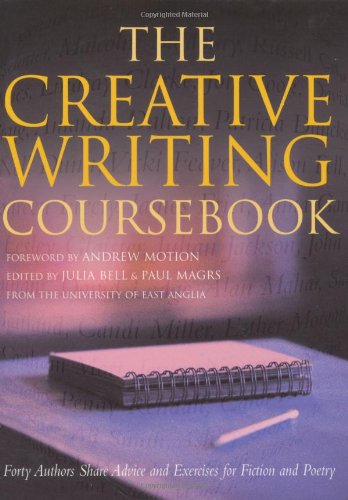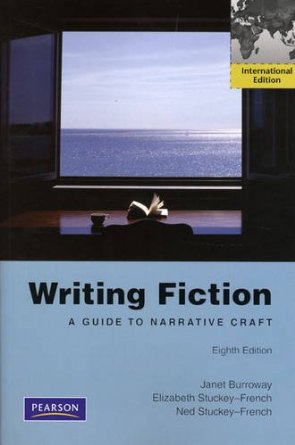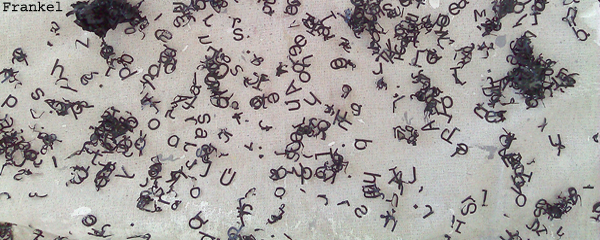
photo by Gary Minniss
Kaleidoscope Storytelling:
The Shape of Motive and the Pattern of Conflict
by Alex Ruczaj
In Kurt Vonnegut’s wonderful lecture on the shapes of stories, he draws curve after curve on his blackboard, showing the story arc – the ‘beautiful shapes’ that all traditional stories follow.
None of us like to think we’re writing by numbers or following some cookie-cutter approach to story writing. But shapes are good. Shapes and patterns give the reader a way in, a clearer view of a narrative, making it easier to recognise and relate to. The difficulty is finding a balance between providing a clear shape that makes the story accessible, but not to make it boring, predictable, or something that readers have seen too many times before. Paul Magrs comments in his essay ‘Shapes of Things’ in The Creative Writing Coursebook:
In any kind of writing we want to stay true to the complexity of real life, but we also want to impose a shape, an artificial structure. You know the world or the experience you hope to relate; you know it inside out. But you have to take the reader by the hand and lead the reader through it.
This is encouraging, the shape is there to help, but not to make it bland. It’s still your material, it just has to be moulded, otherwise it is a mess, a stream of consciousness that only you will be able to fathom any meaning from. But where do you start, particularly when stories often begin, in my case, with ‘mess’? Sporadic notes, a character or two, a scribble of dialogue.
In On Writing Short Stories, Tom Bailey writes that it is a ‘character’s motivation that powers the shaping of the short story’. He goes on to say:
Without motivation, a character has no need to move, to act or react – enjoin, coerce, ridicule, praise, lie – and so, if our characters lack strong motivations, chances are we won’t have much of a story, no one will want to do anything […] There will be no impetus for a story to be told.
This would indicate that finding character motivation is key to creating shape, a way of finding the direction in which your story is headed. Very close to the beginning of Chekhov’s the ‘Lady with the Lapdog’ we are given, in one paragraph, a succinct history of Gurov’s life that provides us with a clear motivation for his forthcoming actions:
He was under forty but he already had a daughter of twelve years old and two sons at school. They had found him a wife when he was very young; a student in his second year and by now she seemed half as old again. She was a tall, erect woman with dark eyebrows.
In a few sentences, in the dark slant of his wife’s eyebrows, we see Gurov’s life laid out. We are at once aware of what drives him, how unhappy he is in his marriage. This is placed closely to the  beginning of the story and is a signal to the reader of what is to come. Soon after, Gurov sees Anna for the first time. We know that he will not rest until he takes Anna for a lover, although we can’t know how it will change him. But we are at once aware of where this story might take us, because we are close to the action and the motivation of the main character. Chekhov also manages to make the sharing of Gurov’s past seem very natural. It is, as Magrs says, ‘true to real life’ and not like forced exposition, and so leads the reader down the narrative path without it seeming like a story, a shape, we’ve come across too often.
beginning of the story and is a signal to the reader of what is to come. Soon after, Gurov sees Anna for the first time. We know that he will not rest until he takes Anna for a lover, although we can’t know how it will change him. But we are at once aware of where this story might take us, because we are close to the action and the motivation of the main character. Chekhov also manages to make the sharing of Gurov’s past seem very natural. It is, as Magrs says, ‘true to real life’ and not like forced exposition, and so leads the reader down the narrative path without it seeming like a story, a shape, we’ve come across too often.
So, identifying motivation helps with the design, helps with where the story is going. But what about what’s inside the overall shape? What about the detail, the scenes – is there some specific pattern we should follow here too? John Clayton, in The Heath Introduction to Fiction, writes that ‘a story grows out of conflict’.
[A]ction, alone, is not conflict, though it can establish conflict. You can pour murder, mayhem, and sex into a story; unless we care about character and the meaning of the action to the characters, you have no conflict and no story. On the other hand even the slightest action can be the focus of powerful conflict.
My stories are generally light on direct conflict, and yet I am aware that some conflict is required to give the story heart, texture and structure. However, as Clayton says, not all conflict has to be dramatic.
In John Steinbeck’s ‘The Chrysanthemums’, the main action and conflict of the story is in a scene depicting a conversation between Elisa and a travelling pot-mender. The tension between the two characters is tangible, as Elisa quickly sways between suspicion and hostility, to intense desire and eagerness to please. As well as the to and fro of words, there are gestures and looks, and a point when she almost touches the pot-mender, that intensify the moment:
Her hand went out toward his legs in the greasy black trousers. Her hesitant fingers almost touched the cloth. Then her hand dropped to the ground. She crouched low like a fawning dog.
He said, “It’s nice, just like you say. Only when you don’t have no dinner, it ain’t.”
She stood up then, very straight, and her face was ashamed.
 This is one of my all time favourite stories, and favourite scenes. In this moment you have Elisa’s longing, her need for the stranger’s attention, her fantastical and romantic nature meeting head on with his desire and personality: cold, hard, realistic, manipulative. It is a brilliant moment and distilled in this gesture and snippet of conversation is a charged moment of sexual tension and conflict on which to build a story.
This is one of my all time favourite stories, and favourite scenes. In this moment you have Elisa’s longing, her need for the stranger’s attention, her fantastical and romantic nature meeting head on with his desire and personality: cold, hard, realistic, manipulative. It is a brilliant moment and distilled in this gesture and snippet of conversation is a charged moment of sexual tension and conflict on which to build a story.
This kind of more subtle conflict is perhaps better described as two characters connecting and then disconnecting, as described in Writing Fiction: A Guide to Narrative Craft, from Janet Burroway:
Narrative is also driven by a pattern of connections and disconnections between characters that is the main source of its emotional effect. Over the course of a story, and within the smaller scale of scene characters make and break emotional bonds of trust, love, understanding or compassion with one another. A connection may be as obvious as a kiss or as subtle as a glimpse; a connection may be broken with an action as obvious as a slap or as subtle as an arched eyebrow.
Understanding that introducing this ‘pattern’ of connection and disconnection helps to create scenes where there is a shifting back and forth of power that readers are drawn into.
Another master of this power shifting is Alice Munro. In her story ‘The Beggar Maid’, Patrick and Rose meet for the first time in a library when someone has grabbed Rose’s leg and run away. The potential conflict between the two characters is at once visible:
He was thin and fair and stood up without any thought for the book in his lap, or the papers in front of him. The book thumped to the floor. A great sheaf of papers, pushed across the desk, upset the ink bottle.
‘How vile,’ he said.
‘Grab the ink,’ Rose said.
He leaned to catch the bottle and knocked it onto the floor. Fortunately the top was on, and it did not break.
‘Did he hurt you?’
‘No, not really.’
This simple exchange is no argument, but it is heavy with underlying conflict. Rose’s relatively calm and nonchalant response clashes with his extreme and excitable one. The falling of the book and ink enhance the feeling of chaos and conflict here. The dialogue characterises them both and sets them apart as very different characters, thus creating tension.
Of course, not all stories should follow a set structure or shape – subverting those conventions can create amazing stories – but I believe that the best stories do have characters with depth and clear desires, and that they also contain conflict of some sort, no matter how subtle. With these elements in place, what happens is a sharpening, a level of clarity that comes from handing a reader a story that they can hold easily in their mind. Shape is a means by which readers can recognise a story, how they can navigate it and extract the author’s intended meaning. Once inside, a clear and interesting pattern will help them to become immersed in the fictional world you have created.


One thought on “Kaleidoscope Storytelling”
Comments are closed.